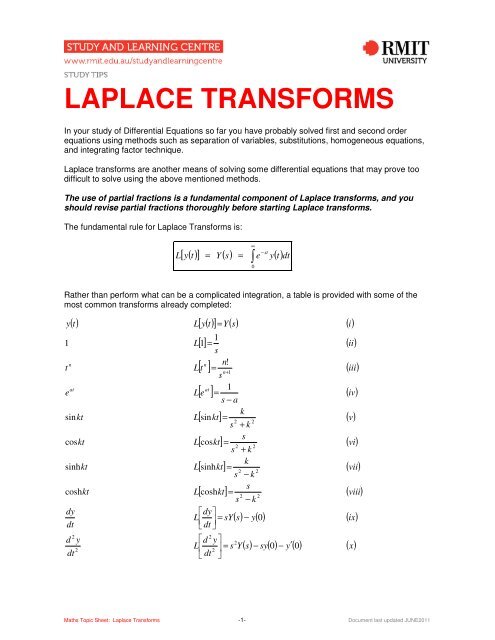
It is interesting to notice that this function represents the response of a first-order system to a step input. The evolution of the displacement is sinusoidal, while the vibration amplitude follows the function ( 1 − e − 2 M D t ). For example, if Y( s) = 1/( s − 0.2), then, from the transform tables, y( t) − e 0.2 t, i.e. This increasing signal could be sinusoidal (if complex conjugate poles) or d.c. On the other hand (or should it be ‘other half’!), a signal having poles on the right-hand half of the s-plane corresponds to an exponentially increasing signal – which is usually extremely undesirable, for obvious reasons. Complex conjugate poles represent a decaying sinusoidal signal – the imaginary coordinates indicating the signal angular frequency, ω ( Fig.

Figure 3.4(a) shows the MATLAB p–z diagram and corresponding signal shape for such a signal, with the pole at −0.2. If the pole is on the real axis then it represents a decaying d.c. the more negative the σ-value, the more rapid the decay. Semilogx(f(1:N_2),20*log(abs(TF(1:N_2)))) % Plot in dB versus log frequencyĪll signals represented by poles on the left-hand side of the s-plane are decaying signals, the further the poles are away from the imaginary axis, i.e. N_2=round(N/2) % Plot transfer function, % only meaningful points Plot(t,y1,‘:k’,‘LineWidth’,2) % Plot output from frequency % domain approach Y1=ifft(Y) % Take the inverse FT to get y(t) % (Step 4) Y=X.*TF % Take product in the frequency % domain (Step 3) X=fft(x) % Take Fourier transform of input % (Step 2) TF=fft(h) % Get TF from impulse response % (Step 1) Plot(t,y(1:N),‘k’) % Plot output from convolution Y=conv(x,h) % Calculate output using convolution H=5* exp(-5*t).*sin(100*t) % Construct the impulse response X=sawtooth(20*t.5) % Construct input signal N=length(t) % Determine length of time vector % Example 7.5 System output found two different ways. Then multiply the two frequency domain functions together and take the inverse Fourier transform to get the time domain output signal. To find the output using the frequency domain approach, convert the impulse response to the transfer function using the Fourier transform and the signal to the frequency domain also using the Fourier transform. Finding the response using convolution requires only the application of MATLAB's conv. Solution: First construct the impulse response function given above using a time vector of appropriate length ( Figure 7.16B). In the next section we explore the simulation approach, which works for any signal and any system, even many nonlinear systems.

If the signal does not have a Fourier transform, for example the step function, then you must use either Laplace transforms or convolution, at least for now. This is the easiest approach if the input signal has a Fourier transform, since the system response can be determined using MATLAB. In Chapter 6 we learned that the Laplace domain and frequency domain approaches are really the same when we are dealing with signals that have a Fourier transform: We let s= jω and the Laplace transfer function becomes the frequency transfer function. This approach is used in Examples 7.1 through 7.4. Convolve the input signal, x( t), with the impulse response, h( t), and get the time-domain output directly. A special case of the Laplace domain approach for periodic signals: convert the signal, x( t), to the frequency domain (i.e., a sinusoidal series) using the Fourier transform, multiply by the transfer function, TF( f), then take the inverse Fourier transform to get the output time response. Convert the signal, x( t ), to the Laplace domain, (i.e., a complex sinusoidal series) using the Laplace transform tables (see Appendix B), multiply by the Laplace transfer function, TF( s), then convert the result back to the time domain using the Laplace transform tables in the reverse direction. We now have several different ways of representing a system and for finding the output of a LTI system to any input: 1)


 0 kommentar(er)
0 kommentar(er)
